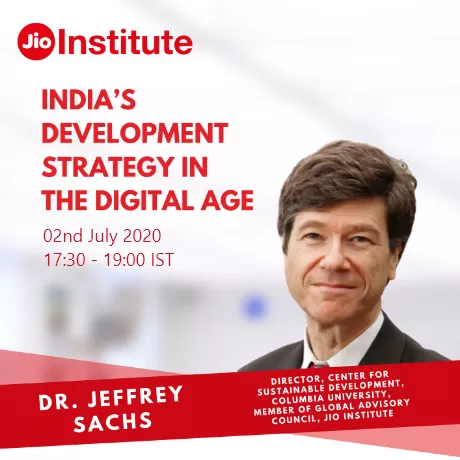India’s Development Strategy in the Digital Age


Speakers
Introduction
The digital revolution, including the rapid deployment of artificial intelligence (AI), is deeply disrupting economic life, and will fundamentally alter the development pathways for today’s developing countries, including India. The Covid-19 epidemic has dramatically accelerated the digitalization of the economy, including e-governance, e-health, e-education, e-commerce, and e-payments. Countries with extensive digitalisation, notably those in East Asia, have successfully deployed the digital technologies to suppress the epidemic at low cost.
The digital revolution will require a new development pathway for India that is not dependent on the exports of labor-intensive manufacturers. The jobs of the past that provided the path to industrialization, notably in apparel and assembly line operations, are rapidly being replaced by robots and AI systems. Already, low-wage developing countries are no longer able to take advantage of their lower wages through the export of labor-intensive manufactured goods. Developing countries such as India will need to create new export sectors to compensate for the reduction of labor-intensive manufacturing earnings.
There are two overriding and inter-connected challenges. The first is to mobilize and economize on capital in an economy that is becoming increasingly capital intensive, including human capital, physical capital, and intellectual capital. The second is how to ensure universal access to education, decent jobs, healthcare, and other basic needs in an increasingly capital-intensive economy. One key will be an expanded public sector that can provide essential services, redistribute income, and collect taxes on capital-intensive activities.
While automation could in principle lead to deepening poverty in India and other developing countries if they lose out on the chance for labor-intensive manufacturing exports, the benefits of digital technologies are likely to far outweigh the costs. Most importantly, these technologies have the capacity to upgrade key business and personal services, as well as India’s governance and human skills, sufficiently to far outweigh the negative effects on low-skilled work. Still, to benefit from the digital revolution, developing countries will need a coherent capital investment strategy and a coherent strategy for ensuring that no part of society is left behind.

